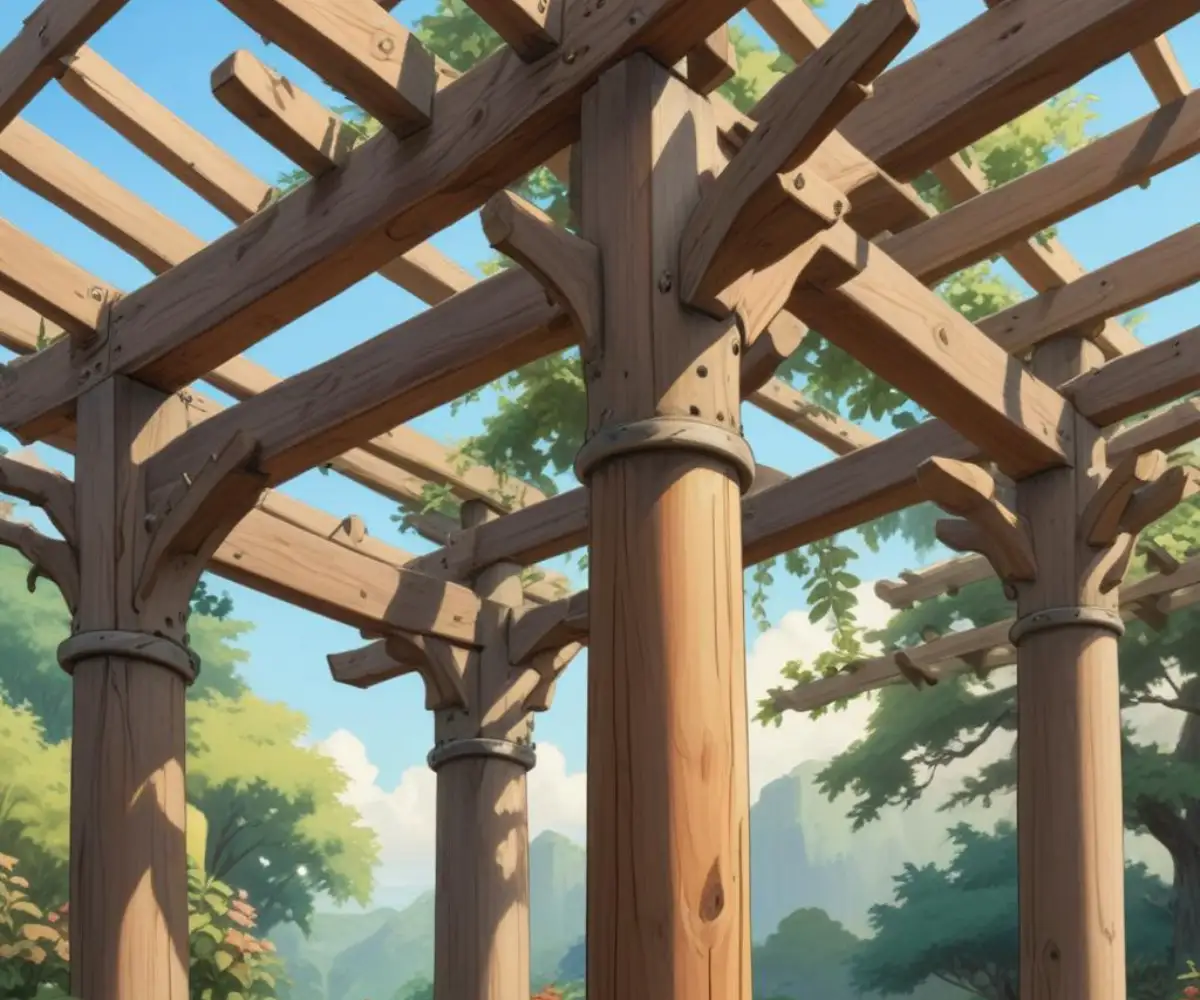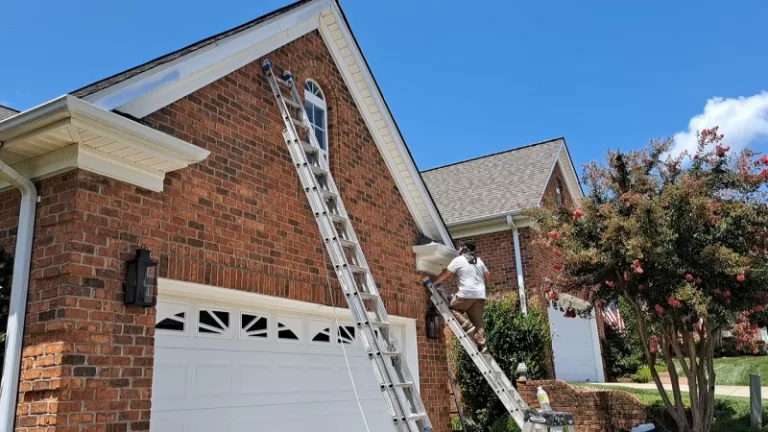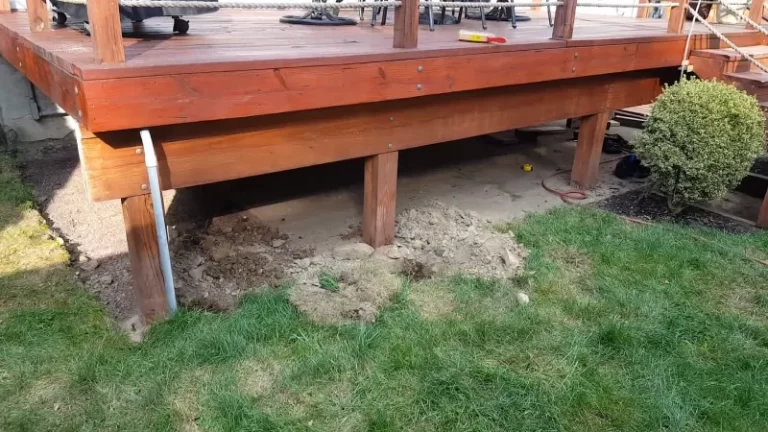Pergola 4×4 or 6×6 Posts? Your #1 Guide to a Sturdy Build
You’ve planned the perfect backyard oasis, centered around a beautiful new pergola. But as you get into the details, you hit a critical question that can make or break your entire project: should you use 4×4 or 6×6 posts?
It’s a decision that stumps many homeowners. Choose incorrectly, and you risk a structure that looks flimsy, begins to sag, or worse, becomes dangerously unstable over time. This guide will eliminate that uncertainty and empower you to build with confidence.
You'll Learn About
Why This Choice Is More Than Just Cosmetic
The posts are the foundation of your pergola’s strength and longevity. Opting for the wrong size isn’t just an aesthetic misstep; it’s a structural one. An undersized post can lead to bowing under the weight of the roof, instability in high winds, and a significantly shorter lifespan for your investment.
Many builders and DIY enthusiasts default to 4×4 posts to save on initial costs, only to face problems down the road. Understanding the fundamental differences in strength, stability, and style is the key to avoiding this common pitfall and ensuring your pergola stands strong for years to come.
The Core Contenders: 4×4 vs. 6×6 Posts Unmasked
Before diving into a direct comparison, it’s crucial to understand what these sizes really mean and how they influence the look of your structure.
A Quick Note on Lumber Dimensions
One of the first things to know is that lumber sizing is “nominal.” This means a 4×4 post is actually 3.5 inches by 3.5 inches, and a 6×6 post is actually 5.5 inches by 5.5 inches. That two-inch difference in actual thickness dramatically increases the strength and visual weight of the post.
The Visual Impact: Proportions and Aesthetics
Beyond strength, the size of your posts defines the character of your pergola. A 4×4 post offers a lighter, more slender profile that can work for smaller, minimalist designs. However, on larger pergolas (typically anything over 10×10 feet), 4×4 posts can appear undersized and out of proportion, creating a “spindly” look.
In contrast, 6×6 posts provide a sense of grandeur and permanence. Their substantial presence makes the entire structure look more robust and high-end, complementing larger backyards and patios beautifully. For most designs, the heftier look of a 6×6 is the superior aesthetic choice.
The Ultimate Showdown: 4×4 vs. 6×6 by the Numbers
Making an informed decision requires a clear, side-by-side comparison. Here’s how the two options stack up across the most important factors.
| Feature | 4×4 Posts (Actual: 3.5″ x 3.5″) | 6×6 Posts (Actual: 5.5″ x 5.5″) |
|---|---|---|
| Structural Strength | Adequate for small, lightweight pergolas (up to 8’x8′). Limited load capacity. | Significantly stronger. Essential for larger spans, heavy roofs, and high-wind or snow areas. |
| Warping Resistance | More prone to twisting, warping, and bending over time, especially with longer posts. | Far more stable and resistant to warping due to its greater mass. |
| Aesthetic Appeal | Sleek and minimalist. Can look undersized on larger structures. | Substantial, robust, and visually proportional for most pergola sizes. |
| Cost | Lower initial cost for both lumber and associated hardware. | Higher cost for lumber and hardware, but a better long-term investment. |
| Best Use Case | Small, simple pergolas with no roof covering, in areas with mild weather. | Pergolas larger than 10’x10′, structures with a roof, or in areas with wind/snow. |
Factor 1: Structural Strength and Pergola Size
The single most important factor is structural integrity. A 6×6 post is substantially stronger than a 4×4. While the vertical compression strength of a 4×4 is quite high, its weakness lies in resisting lateral (sideways) forces from wind and the bending forces from the weight of long beams and rafters.
A good rule of thumb is to use 4×4 posts only for small, simple pergolas with spans no greater than 8 feet. For any pergola that is 10×10 feet or larger, or any size pergola that will have a heavy roof covering, swings, or is located in an area with high winds or snow, upgrading to 6×6 posts is a necessity for safety and durability. If you are curious about the limits of smaller posts, you can learn more about how much weight can a 4×4 hold vertically, but for a full pergola structure, bigger is almost always better.

Factor 2: The Battle Against Bending and Warping
Wood is a natural material that moves, twists, and bends as it dries and weathers. A major complaint from those who use 4×4 posts for larger projects is that they are highly susceptible to warping and bowing over time. This can ruin the look of your pergola and compromise its structural integrity.
Because of its significantly greater mass, a 6×6 post is inherently more stable and far less likely to twist or bend. Investing in 6×6 posts from the start helps you avoid the headache and expense of future repairs. Dealing with a warped post is a frustrating task, so it’s wise to make a choice that minimizes this risk from the beginning. If you’ve encountered this issue before, you know how difficult it can be to figure out how to straighten a bowed 4×4 post.
Factor 3: The Cost Factor: Is Bigger Always Better for Your Budget?
There’s no denying that 4×4 posts are cheaper upfront. A treated 6×6 timber can cost 30% or more than its 4×4 counterpart, and the associated hardware (like post bases and decorative trim) will also be more expensive.
However, it is crucial to view this not as an expense, but as an investment. The additional cost for 6×6 posts buys you peace of mind, superior safety, a longer lifespan, and a more premium aesthetic. The money saved on potential future repairs or even a complete rebuild often outweighs the initial savings of choosing 4x4s.
Factor 4: Long-Term Durability and Local Building Codes
A pergola is a permanent outdoor structure, and its longevity matters. The greater wood volume in a 6×6 post makes it more resistant to rot and decay over the long term compared to a 4×4. They simply take longer to break down, ensuring your structure remains standing for decades.
Furthermore, you must always check your local building codes. In many areas, regulations now mandate a minimum post size of 6×6 for any outdoor roofed structure or deck, rendering the 4×4 option non-compliant from the start. Failing to adhere to these codes can result in fines or being forced to tear your structure down. Always consult your local building authority before purchasing materials.
The Final Verdict: Making the Right Choice for Your Project
While there are niche scenarios for 4×4 posts, the overwhelming consensus from professional builders and experienced DIYers is clear: 6×6 posts are the superior choice for the vast majority of pergola projects.
When to Confidently Choose 4×4 Posts
You can consider using 4×4 posts if your project meets ALL of these criteria:
- The pergola is small (no larger than 8’x8′).
- It will have a lightweight, open-rafter design with no solid roof.
- It is located in an area with very low wind and no snow.
- Budget is the absolute primary concern over aesthetics and longevity.
When Upgrading to 6×6 Posts is Non-Negotiable
You must use 6×6 posts for your project if:
- Your pergola’s dimensions are 10’x10′ or larger.
- You plan to add any type of roof covering, from a retractable canopy to polycarbonate panels.
- You intend to hang heavy items like swings or large planters.
- You live in an area that experiences strong winds, heavy rain, or snowfall.
- You desire a robust, high-end aesthetic that looks proportional and permanent.
Beyond the Posts: Elevating Your Pergola Project
Choosing the right posts is the most important step, but don’t forget the roof. The perfect posts provide the foundation, but the right covering transforms your pergola into a truly usable outdoor room. To make your patio comfortable all day long, consider a high-quality retractable shade system.
Options like the Shaderunner USA offer a brilliant solution, allowing you to control the amount of sun or shade with ease. Pairing a sturdy 6×6 frame with a versatile, modern shade system creates the ultimate backyard destination for relaxation and entertainment.
Frequently Asked Questions
What is the main difference between 4×4 and 6×6 posts for a pergola?
The primary differences between 4×4 and 6×6 posts are strength, stability, and aesthetics. 6×6 posts are significantly stronger and more stable, making them suitable for larger pergolas and areas with high winds or heavy snow. Aesthetically, 6×6 posts provide a more substantial, robust look, while 4×4 posts offer a sleeker, lighter appearance.
Are 4×4 posts strong enough for a pergola?
4×4 posts can be sufficient for smaller, lightweight pergolas, typically those around 10×10 feet or smaller, with short spans between posts. They are a cost-effective option for decorative structures that won’t bear heavy loads. However, for larger pergolas or if you plan to add features like swings, roofing, or heavy climbing plants, 6×6 posts are the safer and more durable choice.
When should I definitely use 6×6 posts for my pergola?
You should use 6×6 posts for pergolas that are large, with spans exceeding 12 feet, or for any structure intended to support additional weight like a roof, heavy vines, swings, or lighting. If you live in an area prone to strong winds or heavy snowfall, 6×6 posts are necessary for the structural integrity and safety of your pergola. They are also recommended for taller pergolas to ensure stability.
Do 6×6 posts offer a better look for a pergola?
The aesthetic appeal of 6×6 posts is a matter of personal preference. They create a more substantial, grand, and visually robust structure that can be a centerpiece in a larger backyard. In contrast, 4×4 posts lend a lighter, more airy, and minimalist feel to a pergola. The choice depends on the desired architectural style and the overall scale of your outdoor space.
Are 6×6 posts significantly more expensive than 4×4 posts?
Yes, 6×6 posts are typically more expensive than 4×4 posts due to the larger amount of lumber. The associated hardware, such as brackets and connectors, for 6×6 posts will also be larger and more costly. While 4×4 posts are a more budget-friendly option for smaller projects, the increased cost for 6×6 posts provides added strength, durability, and peace of mind for larger or more complex pergola designs.


